Introduction
Urban farming, an innovative approach to cultivating food in city environments, is becoming an increasingly popular method of growing one’s own food, even amidst the concrete jungle. Not only does it bring a touch of green to our cities, but it also provides a sustainable food source, enhances our quality of life, and strengthens community bonds. This introduction will give a brief overview of urban farming, why it’s essential, and what this article will cover.
The Concept of Urban Farming
Urban farming, also known as urban agriculture, is the practice of cultivating, processing, and distributing food in or around urban areas. This includes everything from growing vegetables in backyard gardens or on apartment balconies, to raising chickens on city rooftops, to cultivating mushrooms in basements. More sophisticated setups might involve indoor vertical farms, aquaponics systems, or green roofs.
Urban farming is not a new concept; people have been growing food in cities for centuries. However, it has gained fresh momentum in recent years due to rising awareness of sustainability issues, food security concerns, and the desire for healthy, local produce. It’s a versatile practice, adaptable to various spaces and scales, from tiny windowsill herb gardens to city-wide urban farm networks.
Why Urban Farming is Important
Urban farming is vital for numerous reasons. Firstly, it contributes to food security by providing fresh, locally grown produce to urban residents. This is especially important in ‘food deserts’, urban areas where access to affordable, healthy food options is limited.
Additionally, urban farming promotes environmental sustainability. It reduces the need for food transportation, thus cutting down on greenhouse gas emissions. It also aids in waste management by recycling organic waste into compost and helps in urban biodiversity by providing habitats for various species.
Furthermore, urban farming offers numerous social benefits. It promotes community development, improves mental health, offers educational opportunities, and can provide a source of income or supplement household food budgets.
Overview of the Post
In this article, we’ll delve deeper into the world of urban farming. We’ll cover the basics of starting an urban farm, from planning your urban garden and choosing the right crops, to managing pests and harvesting your produce. We’ll also explore different urban farming techniques, share tips and tricks for successful urban agriculture, and discuss the challenges and opportunities it presents. Whether you’re a city dweller with a green thumb or a curious urbanite looking for a sustainable hobby, this post will guide you on your urban farming journey.
In essence, urban farming is a powerful tool for sustainability, resilience, and community-building in our urban landscapes. So let’s roll up our sleeves and get our hands dirty as we explore how to grow your own food in the city.
The Benefits of Urban Farming
Urban farming offers a plethora of benefits, ranging from improving access to fresh, nutritious food, fostering environmental sustainability, and boosting community engagement and resilience. In this section, we’ll delve deeper into the positive impacts of urban agriculture, highlighting why it’s an increasingly essential aspect of city living.
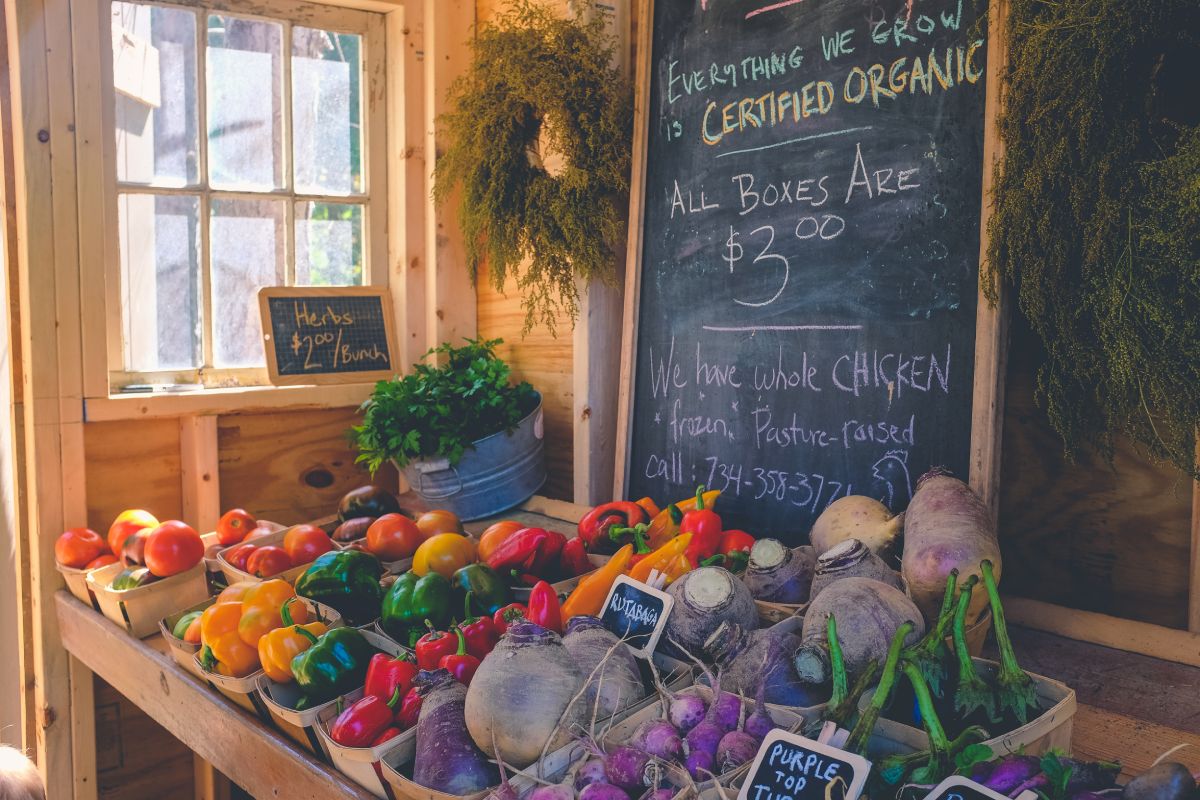
Access to Fresh and Nutritious Food
One of the most direct benefits of urban farming is access to fresh, nutritious food. Urban gardens are typically organic or semi-organic, meaning the food produced is free of harmful pesticides and synthetic fertilizers. This results in healthier, nutrient-dense produce that tastes better than its store-bought counterparts.
Moreover, urban farming improves food security. In many urban areas, especially lower-income neighborhoods, fresh produce can be hard to come by. Urban farming can transform these food deserts into food oases, providing residents with reliable access to fresh fruits, vegetables, and in some cases, even eggs, honey, and meat.
Finally, urban farming allows for food sovereignty. By growing your own food, you control what goes into your body and the way your food is produced. You can choose to grow heirloom varieties, experiment with exotic species, or simply focus on your favorite fruits and vegetables.
Environmental Sustainability
Urban farming plays a critical role in promoting environmental sustainability. By growing food locally, we can drastically reduce the carbon footprint associated with food transportation. Additionally, urban gardens help mitigate the urban heat island effect, as plants absorb sunlight and cool the surrounding air through transpiration.
Furthermore, urban farming contributes to waste reduction. Organic waste, such as kitchen scraps, can be composted and returned to the soil as a nutrient-rich amendment, promoting a closed-loop system. It also encourages biodiversity, providing habitats for a range of urban wildlife, from birds and bees to butterflies and beneficial insects.
Community Engagement and Resilience
The benefits of urban farming extend beyond the garden fence. Community gardens can become focal points for neighborhood gatherings, fostering social connections, and promoting cultural exchange. They provide spaces for recreation, relaxation, and education, offering hands-on learning opportunities for children and adults alike.
Urban farming also fosters resilience. Communities that engage in urban farming are better prepared to deal with food shortages or disruptions in the food supply chain. They can become self-sufficient, producing their own food and sharing the surplus with neighbors.
Additionally, urban farming can have positive economic impacts. It can provide job opportunities and supplement household incomes, especially in disadvantaged communities. It can also spur economic activity, with urban farms often selling their produce at local farmers’ markets or directly to restaurants.
In conclusion, urban farming is a multifaceted solution to many of the challenges of urban living. It promotes health, sustainability, community, and resilience, contributing to the creation of more livable, resilient, and vibrant cities. As we continue to urbanize, the role of urban farming will only grow in importance, making it an essential aspect of the urban fabric.
Choosing the Right Crops for Your Urban Farm
When setting up an urban farm, one of the key decisions to make is what to grow. This decision can impact the success of your urban farming project, and several factors should be taken into consideration. The local climate, space requirements, and maintenance needs should all play a role in determining the most suitable crops for your urban farm.
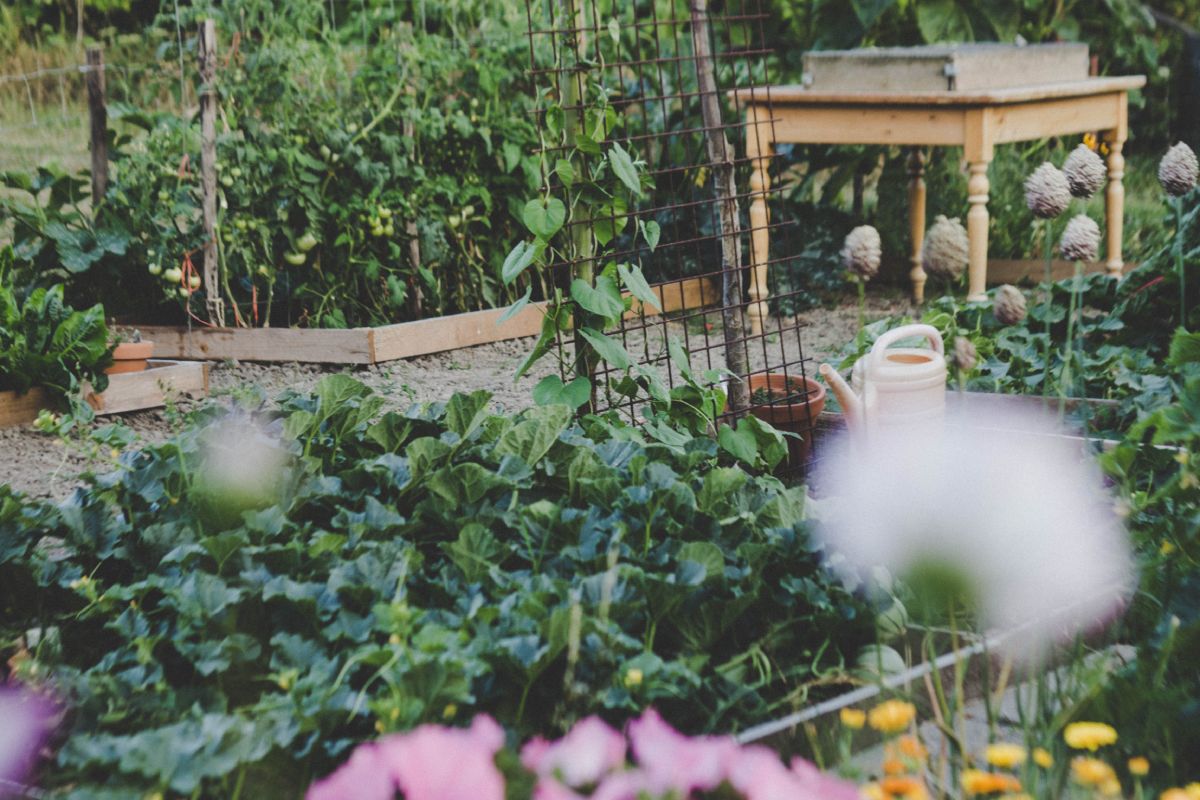
Suitability to Local Climate and Conditions
Every plant has a specific set of environmental conditions where it thrives best, and it is crucial to understand these requirements to select suitable crops. This involves being aware of your local climate, including the average temperatures, rainfall, and sunlight exposure.
For example, tomatoes, peppers, and cucumbers love the heat and require a good deal of sunlight, while leafy greens like spinach and kale can tolerate cooler temperatures and partial shade. Similarly, some plants prefer more humid environments, while others require drier conditions.
You also need to consider the quality and type of your soil, which can vary greatly in urban environments. Some plants thrive in sandy soil, while others prefer clay or loamy soil. If you’re working with containers or raised beds, you have more control over the soil composition and can adjust it to suit the needs of your chosen crops.
Space Requirements
Urban farming often requires working with limited space, and thus, selecting crops that are suited to compact growing conditions is essential. Many varieties have been bred specifically for small spaces, and vertical gardening techniques can also be employed to make the most of the available room.
Leafy greens, herbs, and root vegetables like radishes and carrots generally require less space and are excellent choices for smaller urban farms. Dwarf or bush varieties of larger plants like tomatoes or zucchini can also be suitable for small spaces.
In contrast, crops like corn and pumpkins require a good deal of space and might not be the best choices for an urban garden unless you have a larger area to work with.
Maintenance Needs
Different crops have different maintenance needs, and it’s important to choose plants that align with the time and resources you can devote to your garden. Some crops require regular watering, weeding, and pest management, while others are more low-maintenance.
Herbs and leafy greens tend to be fairly easy to grow, requiring minimal upkeep. Root vegetables are also generally low-maintenance, although they may require more initial preparation to ensure the soil is loose and well-drained.
In contrast, fruiting crops like tomatoes, cucumbers, and peppers often require more care. They need regular watering and feeding, and may require staking or trellising. They are also more susceptible to pests and diseases.
By considering these factors, you can select crops that will thrive in your urban farm, providing you with a bountiful harvest and a satisfying farming experience. Remember, trial and error is a part of the process, so don’t be afraid to experiment and find what works best for your unique situation.
Setting Up Your Urban Farming Space
Urban farming offers innovative ways to grow food in city settings, transforming underutilized spaces into productive agricultural areas. This section will guide you on how to utilize spaces like balconies, windowsills, rooftops, and backyards for your urban farming endeavors. Whether you live in an apartment or have a small backyard, there’s always a way to create a green space.
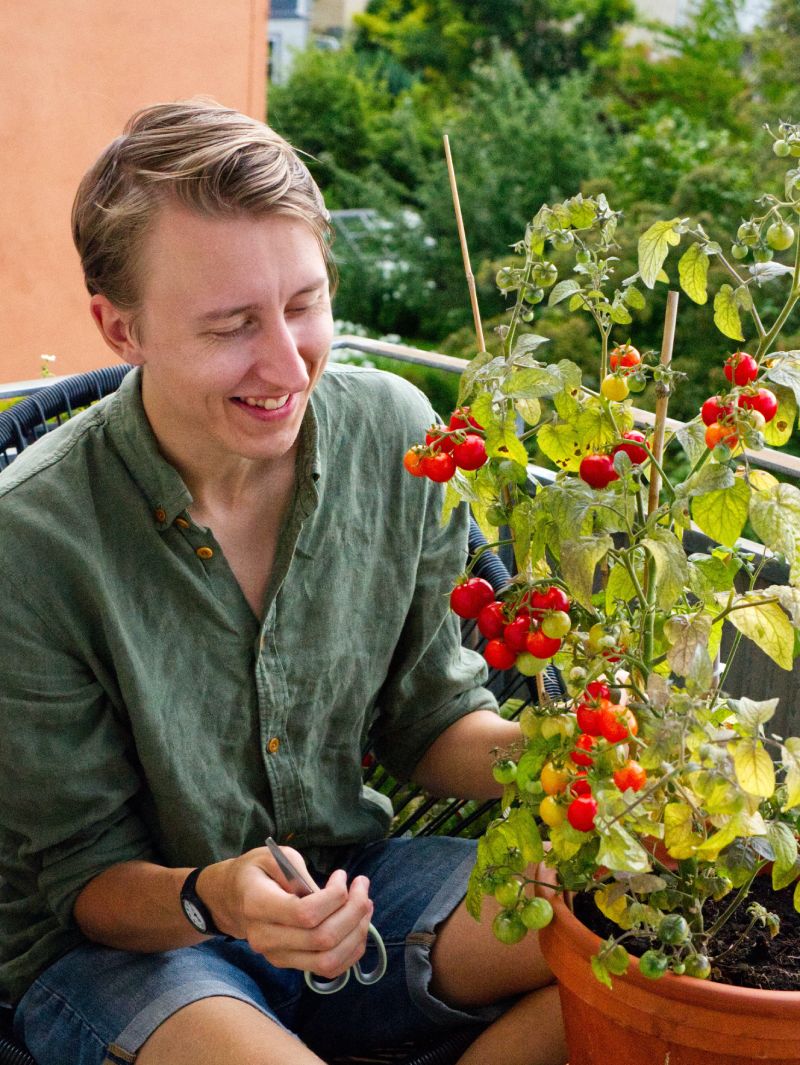
Utilizing Balconies and Windowsills
Balconies and windowsills are prime real estate in the world of urban farming. Balconies offer outdoor space that receives sunlight, while windowsills provide a protected indoor environment for plants.
For balconies, consider using vertical gardening techniques, such as hanging planters or tiered shelves, to maximize space. Choose plants that thrive in pots and can handle the wind and sun exposure typical of balconies. Herbs, lettuce, tomatoes, and strawberries are all good choices for balcony gardening.
Windowsills, particularly those facing south, are perfect for growing herbs and small vegetable plants like chili peppers. These areas usually have limited space, so opt for compact varieties or plants that don’t require much root space. It’s also crucial to use containers with good drainage to prevent waterlogging.
Establishing a Rooftop Garden
If you have access to a rooftop, it can become a spacious garden offering ample sunlight. However, before you start, ensure the roof is structurally sound and can handle the weight of the garden.
For a rooftop garden, raised beds or large containers work well. They not only prevent any potential damage to the roof but also provide good drainage. Choosing plants for a rooftop garden follows similar rules as balcony gardening. Still, the usually larger space might allow for more variety and larger plants.
When setting up, consider the wind exposure common to rooftop spaces. You might need to include windbreaks like trellises or screens in your design to protect your plants. Also, consider how you’ll get water to your garden as rooftops typically don’t have easy access to water sources.
Creating a Backyard Garden
Even a small backyard can become a productive urban farm. Raised beds, containers, or traditional in-ground gardens can all be effective depending on your circumstances.
In planning your backyard garden, observe the sun’s movement throughout the day to understand which areas receive the most light. Most vegetables need at least six hours of sunlight each day, so place your garden accordingly.
Backyard gardens can also benefit from companion planting, where certain plants are grown together for mutual benefit, like pest control or increased productivity. For instance, planting marigolds among your vegetables can help deter pests.
Setting up your urban farming space involves creative thinking and strategic planning. But once established, these spaces not only provide fresh food but also create an environment where nature and urban life can coexist harmoniously. So go ahead, roll up your sleeves, and start planting.
Soil and Composting in Urban Farming
Soil and composting are two fundamental elements in urban farming. Ensuring that your plants have nutrient-rich soil to grow in is crucial for a successful yield. This section will explore the importance of healthy soil, how to set up an urban composting system, and understanding soil composition and pH levels.
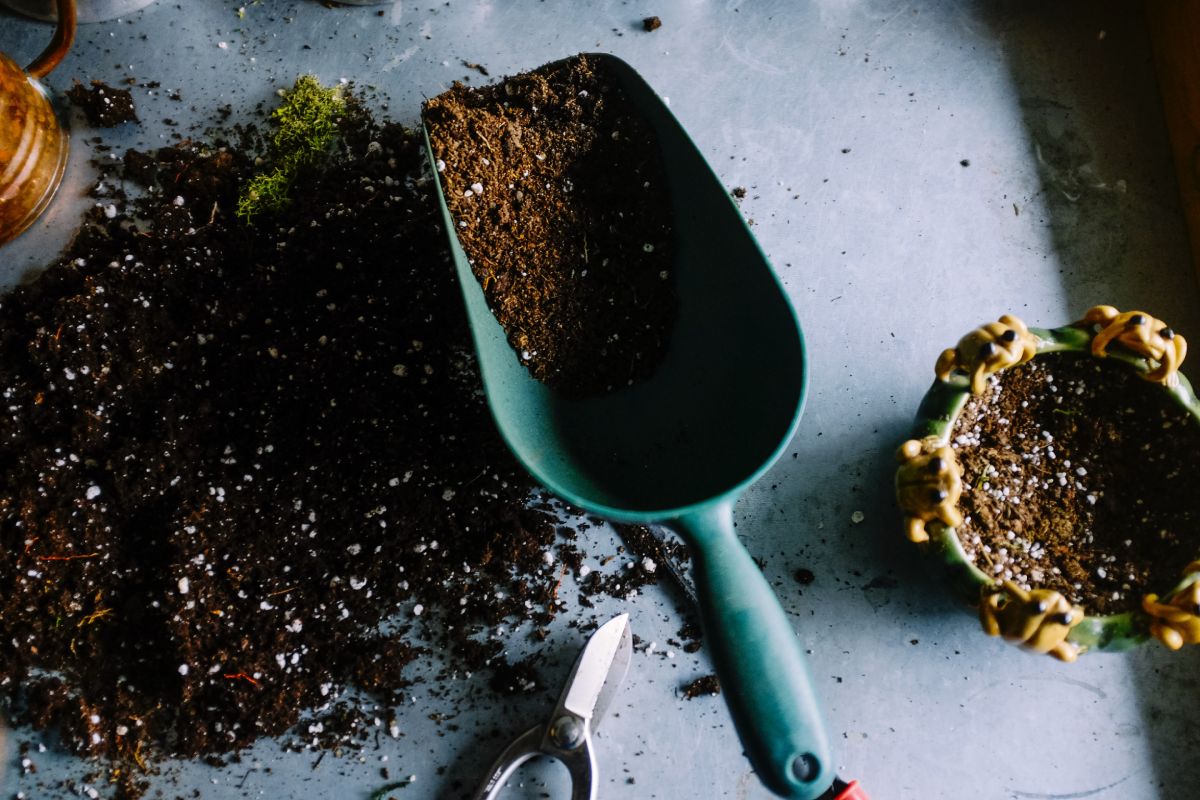
Importance of Healthy Soil
Healthy soil is the lifeblood of any garden. It provides the nutrients that plants need to grow, and a well-structured soil also allows roots to penetrate deeply and access water. Good soil can reduce the need for additional fertilizers and improve plants’ resistance to pests and diseases. In an urban setting, where soil quality can be poor, improving soil health is vital.
Composting, the practice of recycling organic waste into a nutrient-rich soil conditioner, is a fantastic way to enhance soil health. Compost introduces beneficial microorganisms that break down organic matter into nutrients accessible to plants.
Setting Up an Urban Composting System
Setting up an urban composting system is easier than you might think. While larger outdoor compost bins are great for backyard gardens, smaller indoor compost bins or vermicomposting systems (using worms to compost) can be a fantastic solution for apartments or homes with limited outdoor space.
To start composting, collect kitchen waste like vegetable peelings, coffee grounds, and eggshells. Avoid meat, dairy, and diseased plants as they can attract pests or create unpleasant odors. Mix these “green” materials with “brown” materials like dried leaves, newspaper, or cardboard. The brown materials add carbon and help control moisture and odor.
Maintain your compost pile by turning it regularly to aerate and speed up the decomposition process. In a few months, you will have rich, dark compost to mix into your garden soil.
Understanding Soil Composition and pH
Understanding your soil’s composition and pH can help you tailor your composting and fertilizing efforts to your plants’ needs. Soil composition refers to the amounts of sand, silt, and clay in your soil, which affects drainage and nutrient availability.
Soil pH, on the other hand, affects how well plants can take up nutrients from the soil. Most vegetables prefer slightly acidic to neutral pH (6.0 to 7.0). You can test your soil’s pH with a home test kit.
If your soil is too acidic or alkaline, you can adjust the pH with amendments. Adding lime will raise the pH, making soil more alkaline, while adding sulfur will lower the pH, making soil more acidic.
Healthy soil and composting practices are key to a thriving urban garden. By focusing on these elements, you’re ensuring a strong foundation for your crops to grow and flourish, regardless of the size or location of your urban farm.
Watering and Maintaining Your Urban Farm
To reap the full benefits of your urban farm, proper care and maintenance are essential. This encompasses efficient watering techniques, pest management strategies, and regular crop rotation. These components keep your urban farm thriving, ensuring you have access to fresh produce throughout the year.
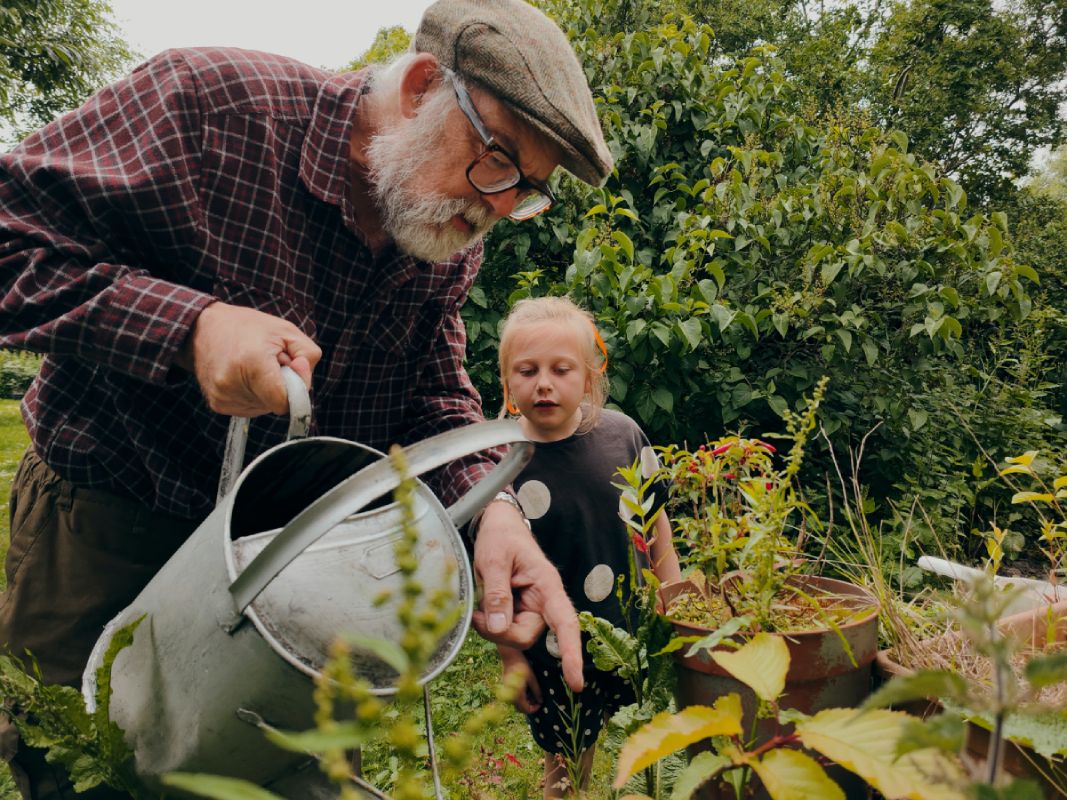
Efficient Watering Techniques
Watering your urban farm properly is key to healthy plant growth. However, urban environments present unique challenges, such as limited water resources or high temperatures leading to quick evaporation.
One efficient watering technique is using a drip irrigation system. This system delivers water directly to the plant’s roots, minimizing waste. Watering early in the morning or late in the evening can reduce evaporation and allow the plants to absorb more water.
Collecting and using rainwater is another excellent way to conserve water. Rain barrels can be connected to your downspouts, and the collected water can be used to water your plants.
Pest Management Strategies
Pests can pose a significant challenge in an urban farm, but there are several strategies you can use to manage them. Companion planting, the practice of planting certain types of plants together, can help deter pests. For example, marigolds are known to repel certain insects and can be planted alongside your vegetables.
Using natural pest deterrents like neem oil, diatomaceous earth, or homemade garlic or chili sprays can also keep pests at bay. If you do experience a significant pest problem, consider introducing beneficial insects like ladybugs or lacewings, which prey on harmful pests.
Regular Crop Rotation and Maintenance
Crop rotation is another crucial component of maintaining your urban farm. It involves changing the location of your crops each growing season to prevent the buildup of pests and diseases that could affect a specific crop. It also helps maintain soil health by diversifying the nutrients that are added and removed by different types of plants.
Regular maintenance includes activities like pruning, staking, or trellising plants that need support, checking regularly for signs of pests or diseases, and replenishing your soil with compost or organic fertilizers.
In summary, watering and maintaining your urban farm may require time and attention, but it is a rewarding process. Not only will it provide you with fresh and nutritious food, but it also offers a peaceful and therapeutic activity that can be done even in the heart of a bustling city. With the right techniques and dedication, you can nurture a thriving green space, no matter where you live.
Harvesting and Storing Your Produce
Once you’ve cultivated your urban farm and watched your crops mature through their growth cycle, the excitement of harvesting comes into play. This stage is not only about reaping what you’ve sown, but it’s also about ensuring that your harvest is properly stored for extended freshness. The process can be delicate, as each crop type has specific needs when it comes to harvest time and storage conditions.
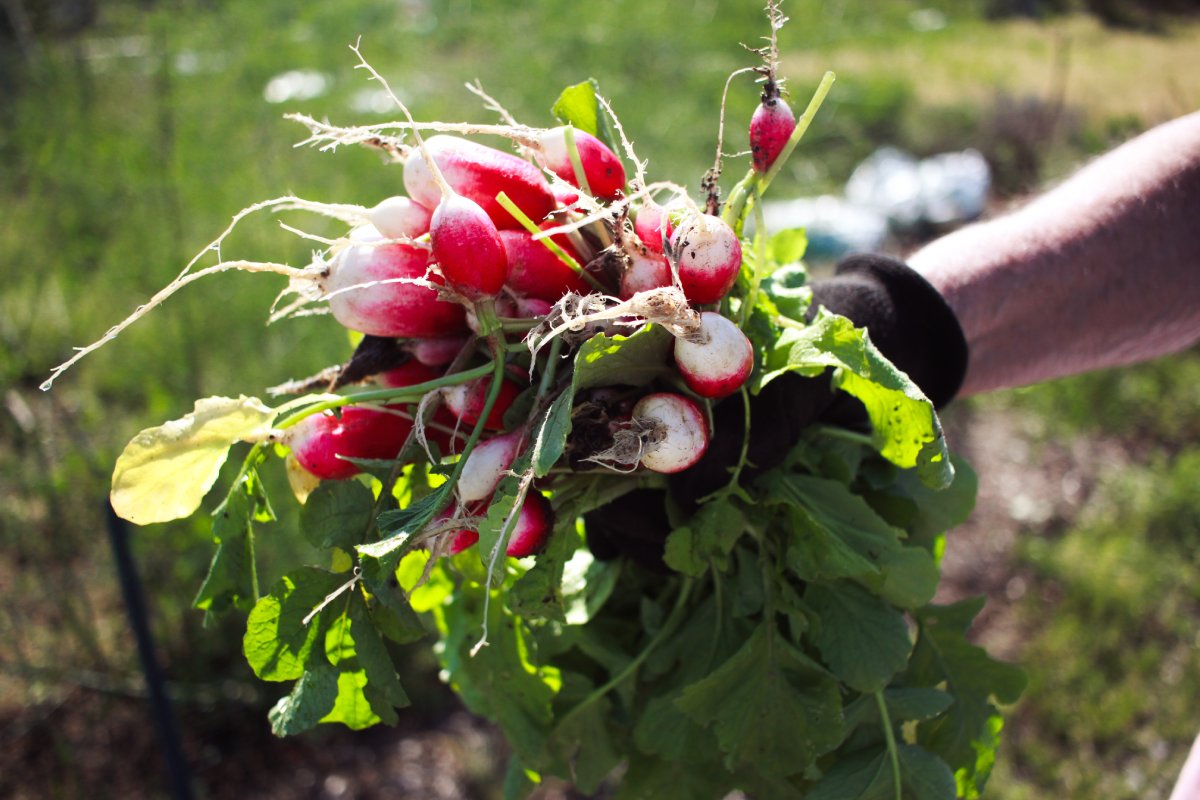
When and How to Harvest Different Crops
Knowing when to harvest is as critical as knowing how to harvest. Each type of crop has its own indicators of readiness. For example, leafy greens such as lettuce or spinach can be harvested when they’ve reached the desired size. More often, you would want to harvest these leafy greens early in the morning when they are still fresh and crisp from the overnight dew.
For root vegetables like carrots and potatoes, you would want to wait until the foliage starts to yellow and die back. These crops can be gently dug up with a hand trowel, taking care not to damage the produce.
Fruiting plants like tomatoes or peppers should be harvested when they are fully colored and slightly firm to the touch. Use a pair of sharp garden scissors or pruners to cut the fruit from the plant to avoid causing any damage.
Proper Storage for Freshness and Longevity
Proper storage is vital for keeping your urban farm’s bounty fresh and extending its lifespan. General rules of thumb are to keep root vegetables in a cool, dark, well-ventilated place, and leafy greens should be kept in the fridge, preferably in the crisper drawer.
Fruits such as tomatoes, cucumbers, and peppers can also be stored at room temperature, but they should be used within a few days of harvesting for maximum freshness.
Remember, it is crucial to keep your fruits and vegetables separate when storing. Many fruits release natural gases as they ripen, which can accelerate the ripening (and rotting) of nearby vegetables.
Preserving Excess Produce
When your urban farm is bountiful, you may find yourself with more produce than you can consume. In such cases, preservation becomes key. Techniques like canning, pickling, and freezing can help extend the shelf life of your produce.
Freezing is a quick and easy way to preserve many types of fruits and vegetables. For optimal results, blanch your veggies first by briefly immersing them in boiling water, then transferring to ice water to halt the cooking process. This helps maintain color, texture, and nutritional value.
Canning and pickling are other great methods for longer-term storage, though they do require some additional equipment and know-how.
In summary, proper harvesting and storage techniques can significantly impact the quality and longevity of your urban farm produce. As you learn the rhythms of your garden and the needs of your plants, you’ll find the entire process to be incredibly rewarding – from planting to plate.
Engaging with the Urban Farming Community
The world of urban farming is not just about growing your own food, but also about engaging with a vibrant and passionate community of like-minded people. Getting involved with the local urban farming community is a way to share experiences, learn new techniques, and contribute to the broader movement. It’s about collective growth, shared knowledge, and most importantly, the creation of local, sustainable food systems.
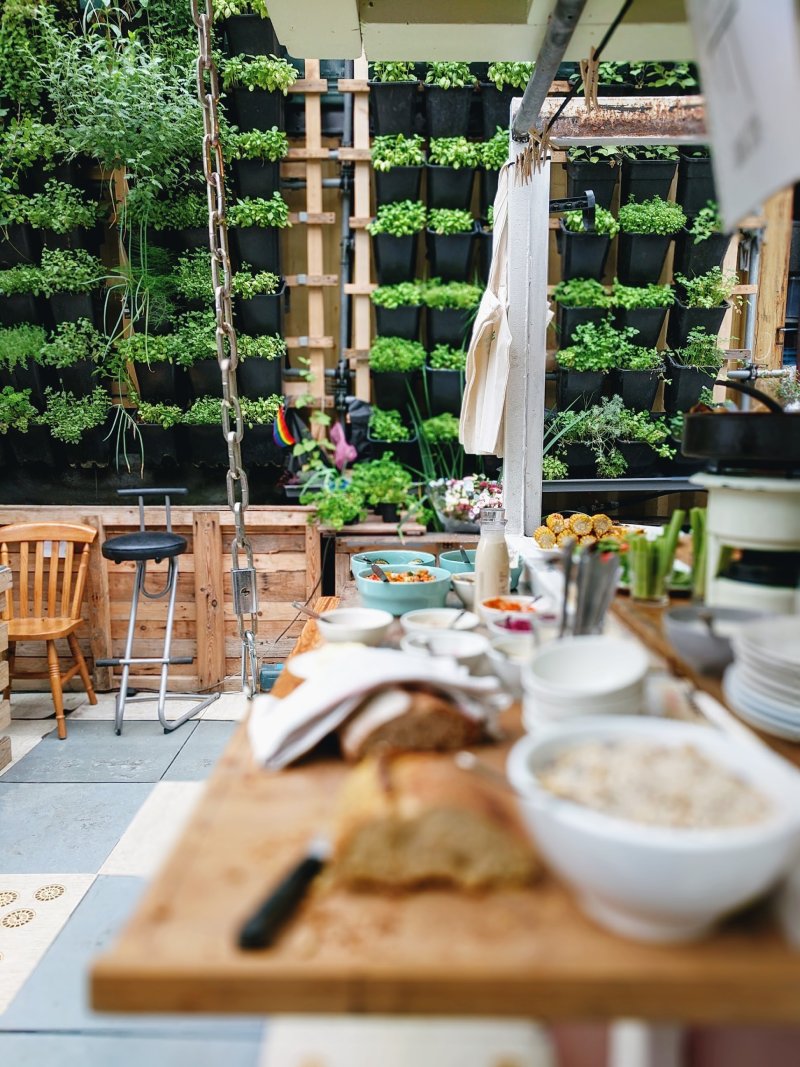
Local Urban Farming Organizations and Resources
Most cities will have organizations dedicated to promoting urban farming. These local organizations are valuable resources, providing advice, workshops, and events centered around urban agriculture. Many also run community gardens where you can get hands-on experience and learn from seasoned urban farmers. They often provide a variety of resources like starter plants, seeds, compost, and tools for aspiring urban farmers.
Online Resources and Forums
In addition to physical organizations, the internet is full of forums, blogs, and websites dedicated to urban farming. These online communities are great places to seek advice, find inspiration, and connect with urban farmers globally. Exploring these resources can enrich your urban farming experience, equipping you with the knowledge and skills to excel.
Sharing and Swapping Produce
Part of the joy of urban farming is the abundance it can bring. It’s common for urban farmers to have more produce than they can consume. Many urban farming communities organize produce swaps, where farmers can exchange their excess goods for other crops. These swaps not only reduce waste but also increase the diversity of your harvest.
Seed Sharing and Plant Cuttings
Sharing and swapping are not limited to produce. Urban farmers often share seeds and plant cuttings, allowing others to grow varieties they may not have access to otherwise. This exchange further fosters biodiversity in our urban landscapes and introduces new challenges and learning opportunities for urban farmers.
Urban Farming Events and Workshops
Urban farming organizations often host events and workshops. These can range from seed planting tutorials to advanced composting techniques, from permaculture design courses to workshops on building raised beds or installing rooftop gardens. Attending these events can greatly enhance your skills and knowledge while allowing you to connect with your local community of urban farmers.
Community Garden Volunteering
Community gardens often need volunteers to help with various tasks. Volunteering at these gardens is another way to engage with the community, learn new techniques, and contribute to a larger project. These collective gardening spaces are places of learning, sharing, and camaraderie - a testament to the spirit of urban farming.
Engaging with your local urban farming community is beneficial in many ways. It allows you to connect with like-minded individuals, learn new skills, and contribute to a sustainable local food system. More importantly, it makes the journey of urban farming more enjoyable and fulfilling. So get out there, start engaging, and become a part of the urban farming revolution!
The Greater Impact of Urban Farming
Urban farming not only provides city dwellers with fresh, homegrown produce, but its reach goes far beyond the individual or family level. The broader impact of urban farming extends to critical areas such as food security, biodiversity, and education, making it a key player in urban resilience and sustainability.
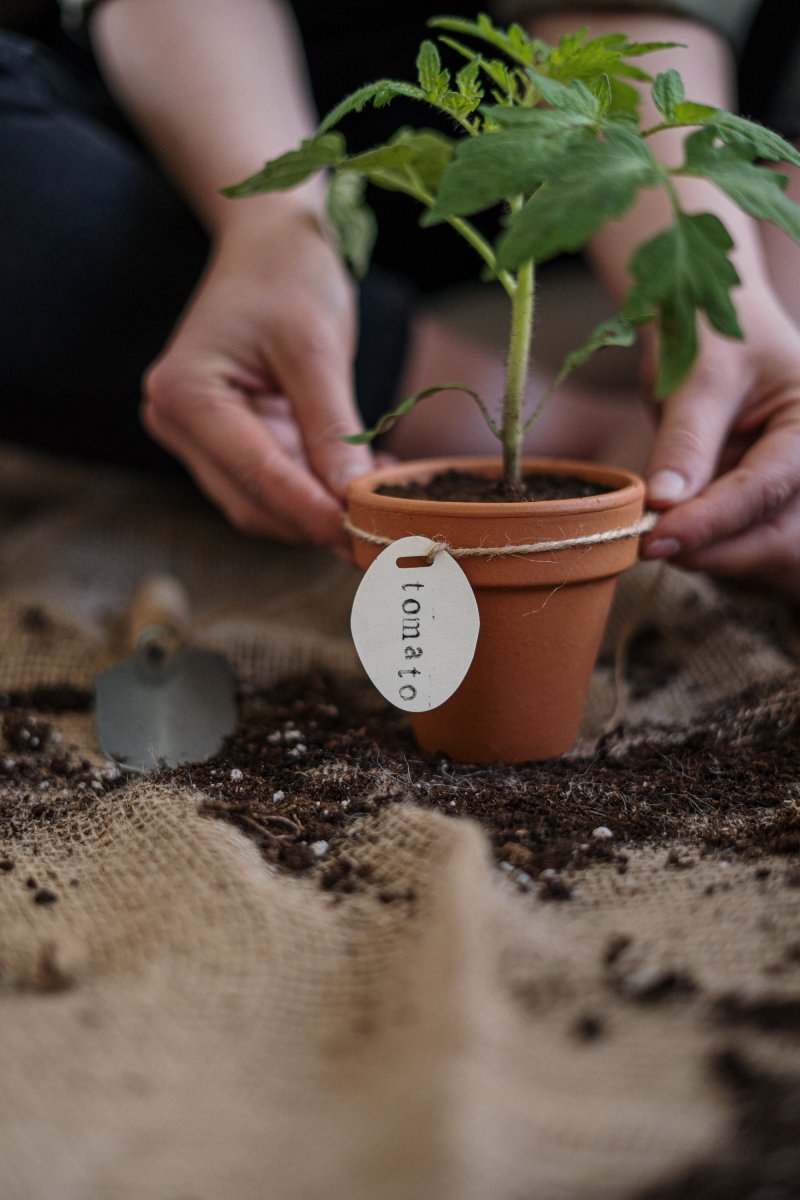
Food Security and Urban Resilience
Urban farming plays a vital role in enhancing food security within cities, reducing reliance on long-distance transportation of produce. This decentralization of food production makes cities more resilient to potential disruptions in food supply chains due to extreme weather events, economic instabilities, or other unforeseen crises.
Moreover, urban farming can provide a lifeline for urban households, especially during times of financial stress. Having access to fresh produce right outside your door eliminates the need to spend a large portion of your budget on groceries, thereby providing an economic cushion.
Promotion of Biodiversity
Urban farming can also significantly contribute to biodiversity in cities. Converting concrete jungles into green oases of fruit trees, vegetable plots, and flowering plants creates habitats for numerous insects, birds, and other small animals.
Maintaining a variety of plants not only helps the ecosystem but also improves the health of the urban farm. Biodiversity in a garden can help control pests and diseases, reduce the need for chemical interventions, and create a more resilient and robust farming system.
Educational Opportunities
Urban farming can serve as an open-air classroom, offering valuable learning opportunities for both children and adults. From biology and ecology to nutrition and cooking, the potential learning areas are vast.
For children, an urban farm can provide hands-on learning experiences that foster an understanding and appreciation of nature, the food system, and the importance of healthy eating. It can also teach them valuable life skills such as responsibility, patience, and the satisfaction of growing their own food.
For adults, it can provide a deeper understanding of sustainable living practices, seasonal rhythms, and resource management. It can also serve as a platform for community learning and sharing of knowledge, promoting a sense of unity and cooperation among neighbors.
The ripple effects of urban farming are numerous and far-reaching, touching upon various aspects of urban living and wellbeing. The potential for cities to harness these benefits and create more resilient, sustainable, and healthy communities is immense. The urban farming movement is much more than a trend—it’s a transformative process that’s redefining our relationship with food and nature, right in the heart of our cities.
Conclusion
Urban farming is more than just a way to grow your own food in the city. It is a transformative movement with the potential to reshape urban landscapes, increase food security, promote biodiversity, and provide countless educational opportunities. But more than that, it reconnects urban dwellers with nature and the food they eat, a connection often lost in the hustle and bustle of city life.
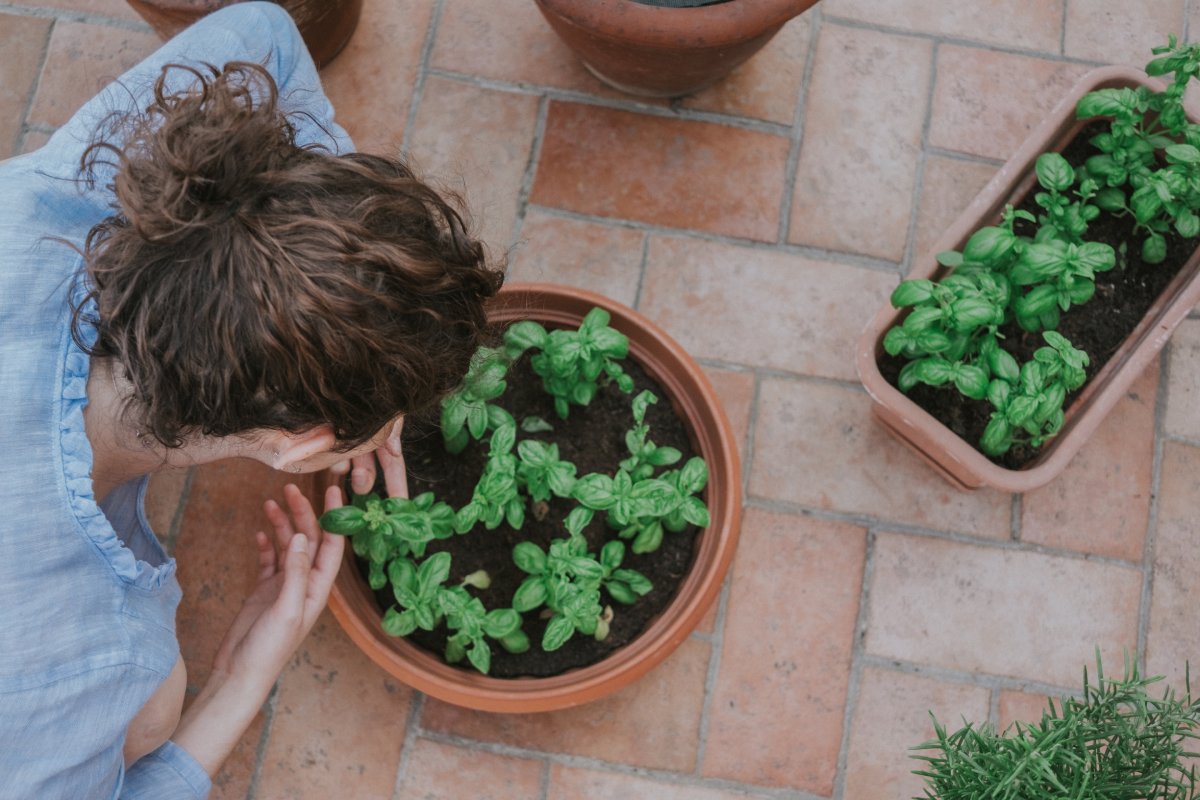
Recap of Key Points
Throughout this post, we have explored the concept of urban farming, from understanding its importance and benefits to practical guidance on how to start and maintain your urban farm. We have discussed how to choose the right crops, set up your urban farming space, manage soil and composting, water and maintain your urban farm, and harvest and store your produce.
The Potential of Urban Farming
We also explored the wider impact of urban farming and its role in enhancing food security, promoting biodiversity, and providing educational opportunities. These larger implications of urban farming underscore its potential not only as a tool for individual self-sufficiency but also as a mechanism for broader urban resilience and sustainability.
Encouragement for Readers to Begin their Urban Farming Journey
As we conclude, we encourage each of you reading this to take the first step into the world of urban farming. Whether you start with a single pot of herbs on your windowsill, establish a small vegetable garden on your balcony, or transform your rooftop into a green oasis, remember that every little bit counts. The potential rewards are significant - from fresh, nutritious food to a greener environment and a stronger community.
The urban farming movement is not just a trend; it is a meaningful shift towards sustainable living and conscious consumption. So, let’s harness this power and grow towards a greener, healthier, and more sustainable future. Your urban farming journey starts now. Enjoy every moment of it!

